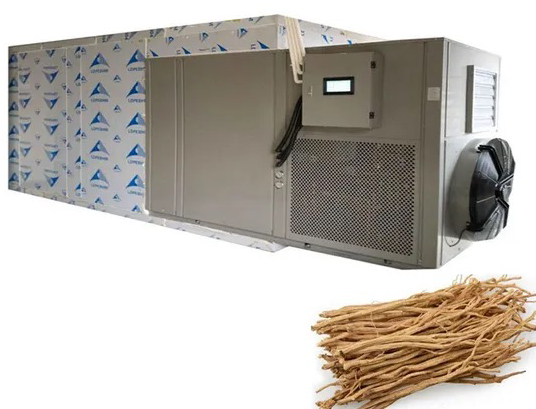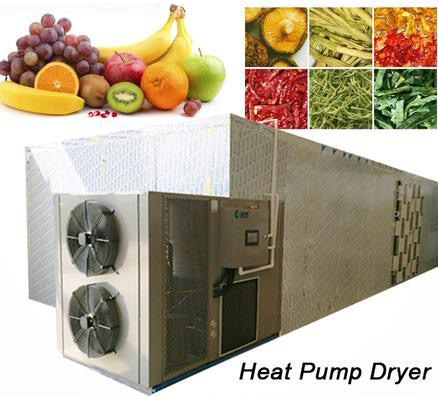
Content Menu
● Understanding Food Dehydrators
>> How Does a Food Dehydrator Work?
● Benefits of Using a Food Dehydrator
● Common Uses for a Food Dehydrator
● Creative Recipes to Try
● Tips for Effective Dehydrating
>> Additional Tips:
● Alternative Uses for Your Dehydrator
● Conclusion
● FAQ
>> 1. What types of foods can I dehydrate?
>> 2. How long does it take to dehydrate food?
>> 3. Can I use my oven instead of a dehydrator?
>> 4. Is it safe to dehydrate meat?
>> 5. How do I store dehydrated foods?
● Citations:
Food dehydrators are versatile appliances that allow you to preserve food while retaining its nutritional value. They work by removing moisture from food, which prevents spoilage and extends shelf life. This article explores various uses for food dehydrators, providing insights into how they can enhance your culinary experience.

Understanding Food Dehydrators
A food dehydrator is designed to remove moisture from food through a process of low-temperature air circulation. The typical temperature range for dehydrating foods is between 95°F (35°C) and 158°F (70°C). This method preserves nutrients better than many other cooking techniques, making it an excellent choice for health-conscious individuals.
How Does a Food Dehydrator Work?
Food dehydrators utilize fans and heating elements to circulate warm air around the food. This process removes moisture gradually, allowing the food to dry without cooking it. The design typically includes multiple trays, enabling you to dehydrate various foods simultaneously.
Benefits of Using a Food Dehydrator
- Extended Shelf Life: Dehydrated foods can last for months or even years without refrigeration.
- Nutrient Preservation: Dehydrating retains more vitamins and minerals compared to boiling or frying.
- Cost-Effective: Buying fruits and vegetables in bulk when they are in season and dehydrating them can save money.
- Healthy Snacking: You can create your own snacks without preservatives or additives.
- Versatility: Dehydrators can be used for a wide variety of foods, from fruits and vegetables to meats and herbs.
Common Uses for a Food Dehydrator
1. Dehydrating Fruits: One of the most popular uses is drying fruits like apples, bananas, and strawberries. These make excellent snacks or additions to cereals and baked goods.
2. Vegetable Chips: You can create healthy vegetable chips from kale, zucchini, or carrots. Simply slice them thinly, season lightly, and dehydrate until crispy.
3. Jerky Making: Dehydrators are perfect for making homemade jerky from beef, turkey, or even fish. The process involves marinating the meat beforehand for added flavor.
4. Herb Drying: Preserve the flavor of fresh herbs by drying them in your dehydrator. This is particularly useful for gardeners with an abundance of herbs.
5. Fruit Leather: Blend fruits into a puree, spread it on a tray, and dehydrate to create healthy fruit leather snacks.
6. Soups and Stews: Dehydrate vegetables like carrots, onions, and tomatoes to create instant soup mixes that only require water to rehydrate.
7. Dog Treats: Make healthy snacks for your pets by dehydrating meats or fruits that are safe for dogs.
8. Craft Projects: Beyond food, dehydrators can be used to dry flowers and herbs for crafting purposes or potpourri.
9. Rejuvenating Stale Snacks: If you have stale chips or crackers, you can revive them by placing them in the dehydrator for a short time.
10. Camping Meals: Prepare lightweight meals that are easy to carry on camping trips by dehydrating cooked meals or ingredients.
Creative Recipes to Try
In addition to the common uses mentioned above, here are some creative recipes you can try with your food dehydrator:
- DIY Fruit Leathers: Blend your favorite fruits with a bit of honey or sugar if desired, spread evenly on a tray, and dehydrate until chewy. Flavors like strawberry-banana or mango-pineapple are crowd favorites.
- Spicy Vegetable Chips: Slice vegetables such as sweet potatoes or beets thinly, season with spices like paprika or chili powder, and dehydrate until crispy for a flavorful snack.
- Dehydrated Soups: Prepare your favorite soup recipe, then dehydrate it in portions. When ready to eat, simply add hot water to rehydrate the meal.
- Herb Seasoning Blends: Combine dried herbs like basil, oregano, and thyme in a jar for homemade seasoning blends that enhance any dish.
- Homemade Granola Bars: Mix oats, nuts, dried fruits, and honey; press into a tray and dehydrate until firm for healthy snack bars on-the-go.
Tips for Effective Dehydrating
- Slice Uniformly: Ensure that all pieces of food are cut to the same thickness for even drying.
- Avoid Overcrowding: Place food in a single layer without overlapping to allow adequate air circulation.
- Rotate Trays: If using a multi-tray dehydrator, rotate the trays periodically to ensure uniform drying.
- Monitor Temperature: Different foods require different temperatures; refer to guidelines specific to each type of food.

Additional Tips:
- Use lemon juice on fruits like apples and bananas before drying to prevent browning.
- For vegetables that tend to release moisture (like tomatoes), consider pre-blanching them briefly before dehydration.
- Store dried foods in airtight containers in a cool dark place; vacuum sealing is ideal for long-term storage.
Alternative Uses for Your Dehydrator
Beyond traditional food preservation methods, there are several alternative uses for your dehydrator:
1. Yoghurt Making: Maintain a constant low temperature (around 110°F) in your dehydrator to culture homemade yogurt successfully.
2. Tempering Chocolate: Use low heat settings in your dehydrator to melt chocolate gently without burning it.
3. Drying Flowers: Preserve flowers by placing them in the dehydrator; they retain their color better than air-dried flowers.
4. Making Meringues: Dry meringue cookies at low temperatures until crisp.
5. Crafting Potpourri: Dry citrus peels and spices together for homemade potpourri blends that smell delightful.
Conclusion
Food dehydrators are invaluable tools for anyone looking to preserve food while maintaining its nutritional quality. They offer numerous benefits ranging from cost savings to healthy snacking options. By understanding how to use a food dehydrator effectively, you can explore new culinary horizons and reduce food waste in your kitchen. With creativity and experimentation, the possibilities are endless when it comes to what you can do with a food dehydrator!

FAQ
1. What types of foods can I dehydrate?
You can dehydrate fruits, vegetables, meats (for jerky), herbs, and even some dairy products like cheese.
2. How long does it take to dehydrate food?
Dehydration times vary depending on the type of food and thickness of slices but generally range from 4 hours to over 12 hours.
3. Can I use my oven instead of a dehydrator?
While ovens can be used for drying foods at low temperatures, they do not provide the same level of air circulation as dedicated dehydrators.
4. Is it safe to dehydrate meat?
Yes, but it's recommended to cook meat first to an internal temperature of 165°F (74°C) before dehydrating it to kill any harmful bacteria.
5. How do I store dehydrated foods?
Store dehydrated foods in airtight containers in a cool dark place. Vacuum sealing is ideal for long-term storage.
Citations:
[1] https://www.brooketurner.com.au/blog/dehydratedfamilyfoods
[2] https://www.cnet.com/pictures/tips-for-using-your-new-dehydrator/
[3] https://www.youtube.com/watch?v=rXNIHzcE8F0
[4] https://www.mitchellcooper.co.uk/10-alternative-uses-for-dehydrators
[5] https://www.osbheatpump.com/news/how-to-use-a-food-dehydrator-10-useful-tips-for-beginners-and-advanced-users/
[6] https://insanelygoodrecipes.com/dehydrator-recipes/
[7] https://www.reddit.com/r/dehydrating/comments/13xyvxx/what_are_some_food_dehydrator_uses/
[8] https://www.sproutculture.com.au/blogs/news/the-ultimate-guide-to-using-a-dehydrator-tips-tricks-and-what-to-look-for-1
[9] https://www.commercialdehydrators.com.au/dehydrating-recipes-filters
[10] https://www.freshoffthegrid.com/dehydrating-food/











